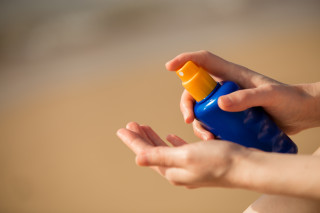With the official start of summer on June 21, vacation plans are in the works for many Michiganders. From camping or beaching it in our own great state to road trips as you feel comfortable, summer often equals travel time. With all of the time it takes to prepare and pack for a trip, planning should also include knowing how to handle a medical emergency while you’re away from home.
Many health insurance companies offer different options for their members while traveling—from coverage options for doctor or urgent care visits, to additional travel assistance and virtual care services.
Complete your summer travel checklist with these four simple steps.
1. Check your travel coverage.
Your health insurance plan may offer travel services you may not even know about. At Priority Health, for example, members and their dependents have 24/7 access to Assist America® at no extra cost. It’s available whenever members are more than 100 miles from home or in another country. Coverage includes:
- Medical emergency services: Access to quality medical care including medical referrals, emergency medical evacuation, prescription assistance and more.
- Travel emergency services: Help with lost luggage or documents, legal and interpreter referrals and care of minor children and pets when experiencing a travel emergency. Plus, pre-trip planning services including visa and immunization requirements, security and natural disaster alerts and more.
Multilingual, trained and emergency-dispatch certified assistance coordinators are available to help 24 hours a day, 365 days a year with one-touch access through the free app.
2. Use your tech.

In addition to emergency travel services, you should know your options for smaller, non-life threatening illness while you’re on vacation. It’s not fun to think about, but sickness can happen when you’re away from your family doctor. Being prepared can save you money and help get you back to the fun faster. When you need care for a non-life threatening medical issue, an ER or urgent care visit can be a pricey and time-consuming option. A virtual visit is the perfect alternative for conditions like fever, sore throats, allergies or minor sprains.
Available 24 hours a day, seven days a week, a virtual visit connects you with a board-certified doctor at the tip of your fingers. Often, they’re available through your family doctor or insurance plan. For example, Priority Health provides access to virtual care in the online member account.
Virtual visits are also cost effective, costing around $45 or less depending on your plan coverage, while a trip to the ER can cost hundreds. So, while it’s relaxing to disconnect from tech during your summer travels, bring your device and charger just in case.
3. Pack smart.
Nobody wants to run to the nearest pharmacy or convenience store in the middle of summer vacation fun for an over-the-counter medication or first aid supply. And if you’re traveling to a more remote location, smaller stores can hike up the prices on these items based on supply and demand. Pack the medications and supplies you and your family tend to use most during the summer months. Make a list of family members and their daily medications, include age-appropriate doses and a schedule with times of day. If you’re currently taking a prescription medication, make sure you have enough to get you through your trip. And if you’re flying and planning to pack your prescriptions in a carry-on, keep them in an easily accessible location in case a TSA agent needs to examine them. A clear plastic bag works great.
Don’t forget to bring supplies to prevent illness and injury—sunscreen SPF 30 or greater and bug spray are key items to keep you safe and feeling good in the summer months. Check expiration dates on containers before you pack. And include some antibacterial hand wipes or alcohol-based hand sanitizer containing at least 60% alcohol, perfect to combat against germs on planes, at airports and on road trips with several stops.
You should also include basic first aid supplies like a thermometer, bandages, ibuprofen or aspirin for kids and adults, and aloe for sunburn relief. Having these items on hand can save you money and keep you from scrambling if you need relief during your travels. The Center for Disease Control and Prevention has this helpful list to guide you as you pack smart for any trip.
4. Remember COVID-19 concerns.
Though the COVID-19 pandemic is beginning to turn the corner due to increased vaccinations nationwide, it’s still important to take precautions to prevent illness.
Remember these prevention tips as you travel:
- Include hand sanitizer and disinfectant wipes on your packing list.
- Wash hands with soap and water frequently for at least 20 seconds. If soap and water are not readily available, use an alcohol-based hand sanitizer with at least 60% alcohol.
- Clean and disinfect any surfaces you frequently touch.
- Always cover your nose and mouth when sneezing or coughing with a tissue, and then throw the tissue away and wash your hands.
- Stay home when you’re feeling sick.
- Avoid close contact of any kind with sick individuals.
- Avoid touching your eyes, nose and mouth.
Wherever your vacation plans take you this summer, remember that a little bit of planning ahead means you can maximize unwinding and relaxing on your trip—even if you have some unexpected health challenges along the way. Happy, safe travels.


